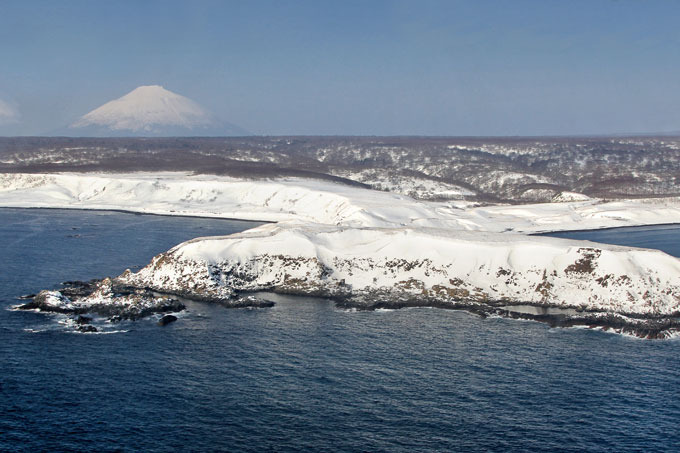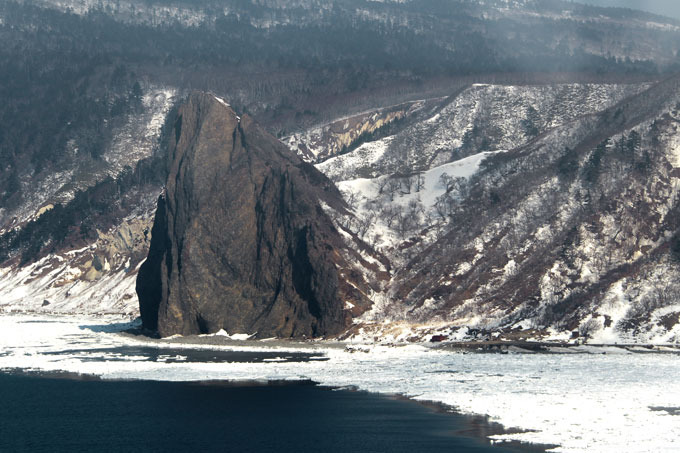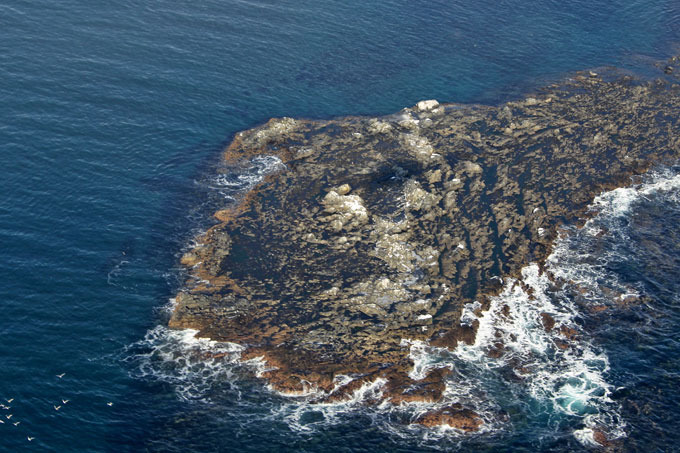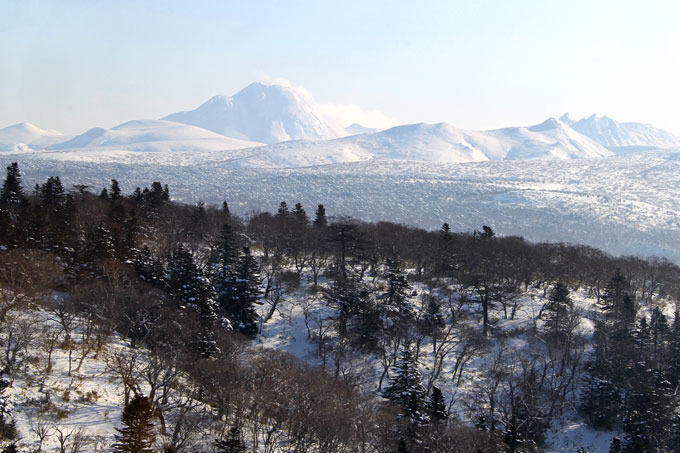Disputed Kuril Islands as seen through bird's eye

The Kuril Islands or Kurile Islands, in Russia's Sakhalin region, form a volcanic archipelago that stretches approximately 1,300 km (810 mi) northeast from Hokkaidō, Japan, to Kamchatka, Russia, separating the Sea of Okhotsk from the North Pacific Ocean.
The Kuril Islands or Kurile Islands, in Russia's Sakhalin region, form a volcanic archipelago that stretches approximately 1,300 km (810 mi) northeast from Hokkaidō, Japan, to Kamchatka, Russia, separating the Sea of Okhotsk from the North Pacific Ocean.

There are 56 islands and many more minor rocks. The total land area is about 15,600 square kilometres (6,000 sq mi) and total population about 19,000
There are 56 islands and many more minor rocks. The total land area is about 15,600 square kilometres (6,000 sq mi) and total population about 19,000

All of the islands are under Russian jurisdiction, but Japan claims the four southernmost as part of its territory, which has led to the ongoing Kuril Islands dispute.
All of the islands are under Russian jurisdiction, but Japan claims the four southernmost as part of its territory, which has led to the ongoing Kuril Islands dispute.

Owing to their location along the Pacific shelf edge and the confluence of Okhotsk Sea gyre and the southward Oyashio Current, the Kuril islands are surrounded by waters that are among the most productive in the North Pacific, supporting a wide range and high abundance of marine life.
Owing to their location along the Pacific shelf edge and the confluence of Okhotsk Sea gyre and the southward Oyashio Current, the Kuril islands are surrounded by waters that are among the most productive in the North Pacific, supporting a wide range and high abundance of marine life.

During the Russo-Japanese War of 1904-1905, Gunji, a retired Japanese military man and local settler in Shumshu, led an invading party to the Kamchatka coast. Russia sent reinforcements to the area to capture and intern this group. After the war was over, Japan received fishing rights in Russian waters as part of the Russo-Japanese fisheries agreement until 1945.
During the Russo-Japanese War of 1904-1905, Gunji, a retired Japanese military man and local settler in Shumshu, led an invading party to the Kamchatka coast. Russia sent reinforcements to the area to capture and intern this group. After the war was over, Japan received fishing rights in Russian waters as part of the Russo-Japanese fisheries agreement until 1945.

During their armed intervention in Siberia 1918-1925, Japanese forces from the northern Kurils, along with United States and European forces, occupied southern Kamchatka. Japanese vessels made naval strikes against Petropavlovsk-Kamchatsky. The Soviet Union seized southern Sakhalin and the Kuril islands by force at the end of World War II, but Japan maintains a claim to the four southernmost islands of Kunashir, Iturup, Shikotan, and the Habomai rocks, together called the Northern Territories
During their armed intervention in Siberia 1918-1925, Japanese forces from the northern Kurils, along with United States and European forces, occupied southern Kamchatka. Japanese vessels made naval strikes against Petropavlovsk-Kamchatsky. The Soviet Union seized southern Sakhalin and the Kuril islands by force at the end of World War II, but Japan maintains a claim to the four southernmost islands of Kunashir, Iturup, Shikotan, and the Habomai rocks, together called the Northern Territories

As of 2003, roughly 16,800 people (ethnic Russians, Ukrainians, Belarusians, Tatars, Nivkhs, Oroch) inhabited the Kuril Islands. About half of the population lived below the poverty line. Fishing is the primary occupation. The islands have strategic and economic value, in terms of fisheries and also mineral deposits of pyrite, sulfur, and various polymetallic ores.
As of 2003, roughly 16,800 people (ethnic Russians, Ukrainians, Belarusians, Tatars, Nivkhs, Oroch) inhabited the Kuril Islands. About half of the population lived below the poverty line. Fishing is the primary occupation. The islands have strategic and economic value, in terms of fisheries and also mineral deposits of pyrite, sulfur, and various polymetallic ores.

In recent times the economic rise of Russia has been seen on the Kurils too. The most visible sign of improvement is the new construction in infrastructure. Construction workers are now working vigorously to build a pier and a breakwater in Kitovy Bay, central Iturup, where barges are still a major means of transport sailing between the cove and ships anchored offshore.
In recent times the economic rise of Russia has been seen on the Kurils too. The most visible sign of improvement is the new construction in infrastructure. Construction workers are now working vigorously to build a pier and a breakwater in Kitovy Bay, central Iturup, where barges are still a major means of transport sailing between the cove and ships anchored offshore.

To deal with a rise in the demand of electricity, the local government is also upgrading a state-run geothermal power plant at Mount Baransky, an active volcano, where steam and hot water were erupting
To deal with a rise in the demand of electricity, the local government is also upgrading a state-run geothermal power plant at Mount Baransky, an active volcano, where steam and hot water were erupting

The San Francisco Peace Treaty between the Allied Powers[1] and Japan from 1951 states that Japan must give up all claims to the Kuril islands, but it also does not recognize the Soviet Union's sovereignty over the Kuril Islands
The San Francisco Peace Treaty between the Allied Powers[1] and Japan from 1951 states that Japan must give up all claims to the Kuril islands, but it also does not recognize the Soviet Union's sovereignty over the Kuril Islands

Furthermore, Japan currently claims that at least some of the disputed islands are not a part of the Kuril Islands, and thus are not covered by the treaty. Russia maintains that the Soviet Union's sovereignty over the islands was recognized following agreements at the end of the Second World War. However, Japan has disputed this claim.
Furthermore, Japan currently claims that at least some of the disputed islands are not a part of the Kuril Islands, and thus are not covered by the treaty. Russia maintains that the Soviet Union's sovereignty over the islands was recognized following agreements at the end of the Second World War. However, Japan has disputed this claim.



